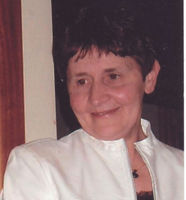 ‘She has only gone to God and God is very near’. These are the words that some dear friends of mine chose for the cover of their mother’s funeral booklet. Their choice of words demonstrates their faith in the God of whom John writes in today’s gospel. For them, as for us, God is not a distant God, but rather a God ofcommunion, and a God incommunion with the world: ‘God so loved the world….’ John uses the term ‘world’ here to refer to humanity in need of salvation. Jesus, ‘God’s son’, is the one through whom the world is saved.
‘She has only gone to God and God is very near’. These are the words that some dear friends of mine chose for the cover of their mother’s funeral booklet. Their choice of words demonstrates their faith in the God of whom John writes in today’s gospel. For them, as for us, God is not a distant God, but rather a God ofcommunion, and a God incommunion with the world: ‘God so loved the world….’ John uses the term ‘world’ here to refer to humanity in need of salvation. Jesus, ‘God’s son’, is the one through whom the world is saved.
Nothing in John’s gospel should be read in isolation from the whole. Our passage forms part of Jesus’ dialogue with a Pharisee called Nicodemus who recognises that Jesus is ‘of God’. Jesus leads Nicodemus to new understandings about relationship with God. The need to be ‘born of the Spirit’ is part of that conversation.
Trinitarian language pervades John’s gospel and is present elsewhere in the Christian scriptures, almost certainly reflecting the incipient belief of the earliest communities in a God who is one but also three-in-one. This belief was to develop over the subsequent centuries into the doctrine of the Trinity which is at the very heart of Christian faith.
Perichoresis , a Greek term suggestive of dancing or of figures interweaving, is one of the earliest and probably one of the most striking images used to explain the Trinity. The life that is in God is three and yet one in a totally harmonious dance of equals. The wonder is that God so loves the world and its inhabitants that we are invited to join the dance. Trinity Sunday is the day we set aside to celebrate the nearness of the God who draws us into the dance of life and love.
Veronica Lawson RSM